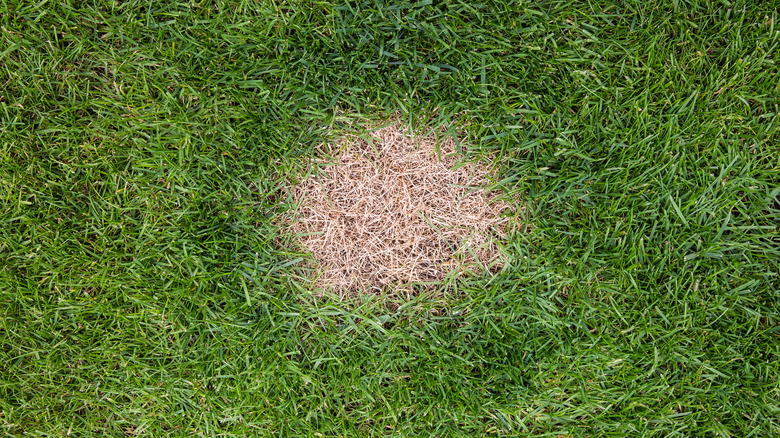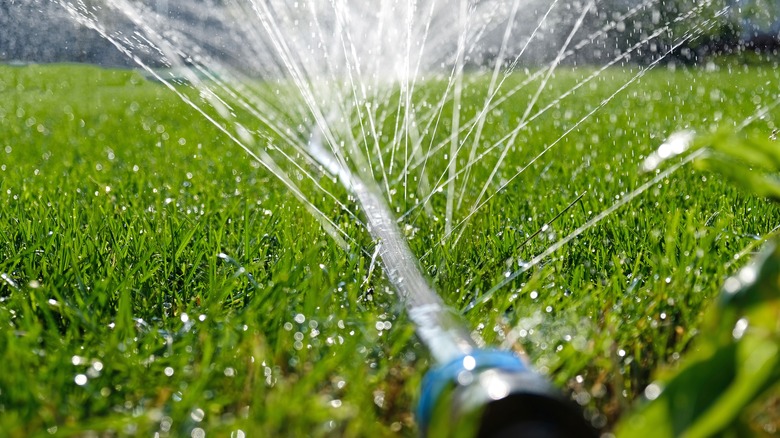The Best Way To Prevent Your Grass From Burning Up In The Summer Heat
Maintaining a healthy lawn is a year-round effort that takes a lot of work. It also takes a lot of preparation for you and your family to get ready to enjoy the lawn during the warmer months. This is why seeing patches of dead-looking grass can be particularly disheartening, and you might be looking for ways to bring your dying lawn back to life. Before you assume your lawn is dying, though, chances are that what you're dealing with is a case of lawn burn. When you come across these yellow or brown patches of grass, it's important to reassess your fertilizer technique and watering schedule to prevent further lawn burn incidents during the hot summer months.
As the name suggests, lawn burn refers to instances in which your grass gets burnt. This is usually due to stress from too much fertilizer, or perhaps an uneven application of the product. Other potential causes of lawn burn include pet urine, lack of water, accidental chemical spills, or lawn mower leaks. If you're uncertain of what's causing lawn burn, one key sign is the pattern of the areas of stressed grass. While drought and lack of water can cause widespread wilting damage, true burns from fertilizer, chemicals, or urine are more likely to develop into irregular-shaped patches or streaks of discolored grass. Also, if you have a cool-season lawn, know that your grass can turn brown in the summer due to dormancy, and you should avoid fertilizer during this time.
How to treat and prevent lawn burns
The good news is that, despite the horrible appearance along with its name, lawn burn can be remedied to avoid further grass discoloration. First, you will need to determine the underlying cause. Fertilizer burns are among the most common contributors to lawn burn. Stressed grass from too much fertilizer can cause large brown areas in your lawn. These may be managed by giving the affected areas a few extra watering sessions to help wash the excess product away. On the other hand, you might see spots of light green or yellow grass along with areas that are darker green. These can indicate an uneven application, which can be fixed by applying fertilizer to the lighter areas. To prevent future burns, determine the best fertilizer for your lawn, make sure you have an accurate measurement of your yard, and use a uniform applicator.
It's also important to ensure that your lawn has adequate water overall, particularly as temperatures climb. This doesn't mean you need to water your lawn every day, though. It's far better to make sure your grass gets enough water at the deepest root level every week, rather than simply watering the top part of your lawn only. As a rule of thumb, water your lawn in the early mornings between 5:00 am and 9:00 am to prevent evaporation. You can also water specific spots in your yard whenever a pet urinates on your grass to prevent damage. Additionally, be sure you inspect lawn equipment for any signs of leaks to avoid chemical and gas spills.

